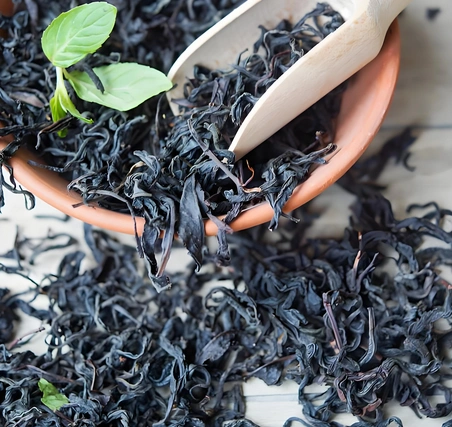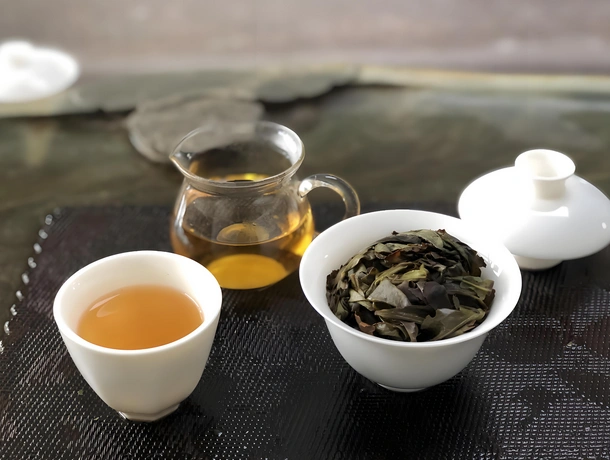Oolong tea antioxidants shine like hidden gems in every cup of this semi-oxidized marvel, promising a radiant glow, a sharpened mind, and a heart that sings with vitality. From the first steam-kissed sip—where floral whispers of orchid meet toasty caramel depths—you feel an electric surge of wellness. Imagine antioxidants wrapping your cells in protective warmth, smoothing fine lines, bolstering metabolism, and calming frazzled nerves. Whether you crave oolong tea for skin health or seek a natural metabolic boost with oolong tea and metabolism, this guide will reveal how to harness the full power of oolong’s antioxidant arsenal.

What Are Antioxidants in Oolong Tea?
Antioxidants are nature’s defenders, neutralizing harmful free radicals that threaten cellular health. In oolong tea antioxidants, the star compounds include:
- Catechins: Dynamic flavonoids that scavenge oxidative damage.
- Theaflavins & Thearubigins: Formed during semi-oxidation, these polyphenols lend rich color and robust antioxidant punch.
- L-theanine: A calming amino acid that works in harmony with caffeine to promote focus without jitters.
Together, these molecules create a symphony of defense and rejuvenation, making oolong a potent elixir of holistic wellness.
Top Health Benefits of Oolong Tea Antioxidants
Skin Health & Radiance
A daily ritual of oolong tea for skin health can transform a dull complexion into a luminous canvas:
- Free-Radical Protection: Catechins shield collagen fibers from UV-induced damage.
- Anti-Inflammatory Soothing: Theaflavins calm redness and support skin barrier repair.
- Hydration Boost: Polyphenols help lock in moisture, reducing fine lines and enhancing suppleness.
Imagine your skin drinking in each sip—a gentle internal spa where every antioxidant molecule works to refine your glow.
Metabolism & Weight Management
For those pursuing a healthy silhouette, oolong tea and metabolism go hand-in-hand:
- Thermogenic Lift: Mild caffeine and catechins boost calorie burn by 5–10%.
- Fat Oxidation: Tea polyphenols stimulate fat-metabolizing enzymes—perfect for a pre-meal cup.
- Appetite Control: The gentle tannins curb cravings, making balanced eating feel effortless.
Picture your body as a finely tuned engine, each cup of oolong oiling metabolic cogs and clearing away sluggish buildup.
Heart Health & Blood Sugar Regulation
Theaflavins in oolong tea antioxidants contribute to cardiovascular harmony:
- Vascular Support: Improved endothelial function keeps arteries flexible.
- Cholesterol Balance: Reduction in LDL levels without depleting beneficial HDL.
- Blood Sugar Stability: Polyphenols slow glucose absorption, offering gentle support for healthy insulin response.
Envision your heart humming steadily—each antioxidant acting like a microscopic caretaker, keeping rhythms smooth and steady.
Comparing Antioxidant Levels Across Oolong Varieties
Not all oolong tea antioxidants are created equal; terroir and processing sculpt their potency.
Wuyi Rock Oolong Tea
High-heat roasting on granite cliffs produces Wuyi rock oolong tea with deep thearubigins—rich, smoky antioxidants that linger like a warm ember.
Anxi Tieguanyin Tea
Light pan-fired leaves of Anxi Tieguanyin tea preserve delicate catechins and L-theanine, bestowing a floral-bright antioxidant profile that calms and restores.
Taiwanese High-Mountain Oolong
Misty peaks yield Taiwanese high-mountain oolong rich in both catechins and theaflavins, thanks to cool nights and gentle oxidation—an ideal balance of breath-freshening florals and warm sweetness.
Phoenix Dan Cong Oolong Tea
Single-bush cultivars like Phoenix Dan Cong oolong tea concentrate antioxidants distinctively. Each “xiang” (fragrance) brings unique polyphenol blends—some like Mi Lan Xiang sparkle with catechin bursts, others like Ya Shi Xiang deepen in theaflavin intensity.

The Role of Caffeine and Antioxidants
Oolong Tea Caffeine Content
With moderate caffeine (30–50 mg per cup), oolong offers a gentle lift—enough to enhance focus without overstimulation. Combined with L-theanine, this synergy fosters a “calm alertness,” ideal for sustained productivity.
Balancing Stimulant and Antioxidant Properties
- Morning Boost: A steamy cup fuels wakefulness and floods cells with antioxidants.
- Afternoon Calm: A second steep smooths nerves, thanks to L-theanine, while replenishing antioxidant stores.
- Evening Ritual: Opt for lighter oxidized styles to avoid sleep disruption while still benefiting from antioxidant therapy.
How to Maximize Antioxidant Intake from Oolong Tea
Optimal Brewing Methods
- Water Temperature: 90–95 °C for light oxidized, 95–100 °C for dark roast—ensuring maximal polyphenol extraction.
- Steep Time: 3–5 minutes for Western-style; 15–30 seconds per infusion in Gongfu-style.
- Multiple Infusions: Up to 6–10 brews unleash evolving antioxidants—each steep a new wave of cellular protection.
Steep Times and Antioxidant Yield
- Short & Strong: Quick 30-second steeps concentrate catechins.
- Long & Mellow: Extended 5-minute brews enrich theaflavins and thearubigins.
- Blend for Balance: Alternate steep lengths to harvest the full antioxidant spectrum.

🔗 For more tea brewing methods, check out the YouTube video explaining the brewing methods.
Incorporating Oolong Tea into a Healthy Lifestyle
Daily Routines
- Morning Energizer: Kick off metabolism with a bright high-mountain oolong.
- Midday Respite: Sip Anxi Tieguanyin for calm focus and a gentle antioxidant refill.
- Post-Meal Ritual: A dark-roasted Wuyi rock infusion to soothe digestion and stabilize blood sugar.
Pairing with Antioxidant-Rich Foods
Combine oolong with berries, dark chocolate, and leafy greens to amplify free-radical defense.
DIY Oolong-Infused Recipes
- Oolong-Citrus Smoothie: Brewed concentrate + orange + banana + spinach = antioxidant powerhouse.
- Chilled Mint & Honey Iced Oolong: Cold brew with fresh mint and a drizzle of honey for a refreshing summer tonic.
Selecting and Storing Antioxidant-Rich Oolong Tea
Identifying High-Antioxidant Leaves
- Appearance: Lush, intact leaves with vibrant hues—more surface area equals more antioxidants.
- Aroma: Potent floral or smoky notes indicate preserved polyphenols.
- Origin & Harvest: First flush spring teas tend to pack the highest catechin content.
Proper Storage
Store in airtight, opaque containers away from light, heat, and moisture. Freshness preserves antioxidant potency; ideally, consume within six months of harvest for peak benefits.
FAQs About Oolong Tea Antioxidants
- How much oolong tea should I drink daily?
Aim for 2–4 cups to harness antioxidant and caffeine benefits without overstimulation. - Does steep time affect antioxidant levels?
Yes—longer steeps extract more theaflavins, while multiple quick brews maximize catechins. - Are oolong antioxidants better than green tea?
Oolong bridges catechins and theaflavins, offering a broader antioxidant spectrum compared to green tea’s catechin focus.
Conclusion: Embrace Oolong Tea Antioxidants Daily
From the misty peaks of Taiwan to the granite cliffs of Wuyi and the verdant groves of Anxi, oolong tea antioxidants weave a tapestry of health, beauty, and vitality. By choosing your favorite style, mastering brewing techniques, and embracing this ancient elixir as a daily ritual, you unlock a world where each cup becomes a celebration of cellular care, radiant skin, and energized clarity. Sip deeply—let the antioxidants flow—and transform ordinary moments into extraordinary acts of self-renewal.



